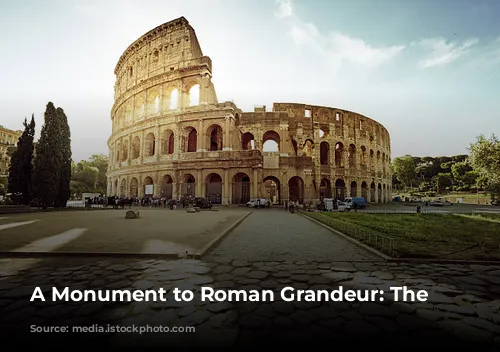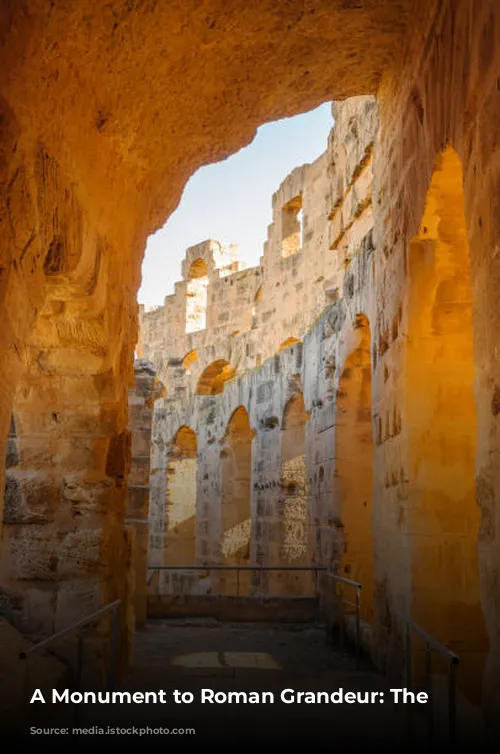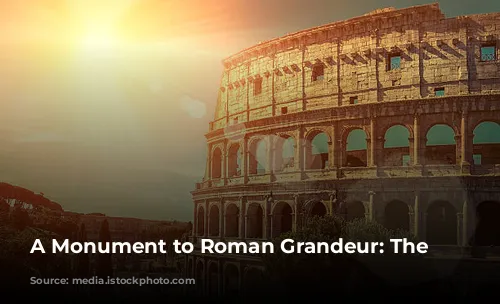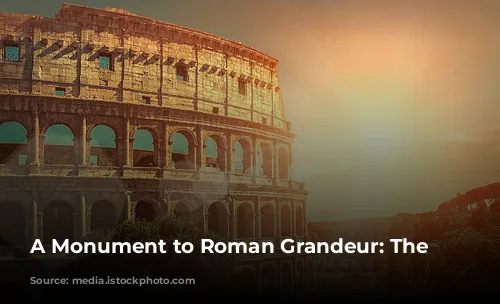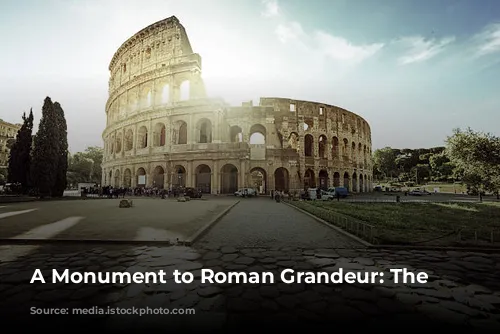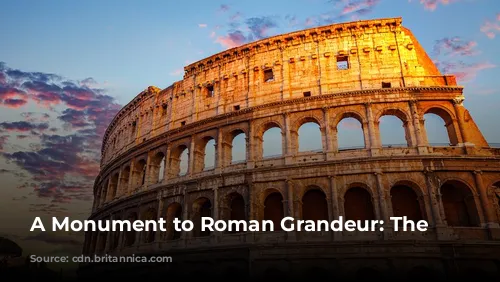The Colosseum, a majestic structure that stands as a testament to the Romans’ architectural and engineering prowess, is one of the few largely intact remnants of the Roman Empire. It’s not just a historical marvel, but also a crucial driver of tourism revenue for Italy. In 2018 alone, the Colosseum, along with the Roman Forum and Palatine Hill, attracted visitors in droves, generating over $63.3 million (€53.8 million), the highest revenue from any tourist attraction in Italy. This colossal income showcases the enduring allure of ancient Rome and its iconic landmarks.
From Arena to Fortress to Quarry: The Colosseum’s Transformation
The Colosseum’s journey through time is marked by dramatic transformations. After the fall of the Western Roman Empire, this magnificent structure fell into a state of utter neglect. In the 12th century, the Frangipane and Annibaldi families, powerful Roman families, repurposed the arena, turning it into a formidable fortress, a far cry from its original purpose. Later, in the late 15th century, Pope Alexander VI, a figure known for his power and influence, allowed the Colosseum to be used as a quarry, a stark reminder of its gradual decline. This period of over a thousand years of neglect saw the Colosseum stripped of its glory, its materials used for other purposes. It was only in the 1990s that state-funded restoration efforts began, a testament to the realization of its immense historical value.
The Colosseum: A Symbol of Imperial Power and Entertainment
The Colosseum was built during a turbulent period in Roman history, following the “Year of the Four Emperors,” 69 CE. Emperor Vespasian, seeking to revitalize Rome, commissioned the construction of the Colosseum, a grand amphitheater intended to serve as a focal point for entertainment. Like other amphitheatres of its time, the Colosseum was designed to host a range of spectacles, including gladiatorial contests, animal hunts, and even mock naval battles. This grand structure was meant to showcase the emperor’s power and to keep the Roman populace entertained, a clever strategy to maintain control and appease the masses.
From Humble Beginnings to a Colossal Structure
The Colosseum’s construction began under the reign of Emperor Vespasian between 70 and 72 CE. Vespasian, who rose to power through a series of events rather than a noble lineage, chose to replace the opulent palace complex of the tyrannical Emperor Nero with a public arena, a symbolic gesture that resonated with the people. The completed structure was dedicated in 80 CE by Titus, Vespasian’s son and successor, who celebrated its inauguration with 100 days of extravagant games. Emperor Domitian, Titus’ successor, added the Colosseum’s fourth story in 82 CE, further enhancing its grandeur. It’s worth noting that the Colosseum was financed with the spoils of war, specifically the plunder from Titus’s conquest of Jerusalem in 70 CE. The construction itself was carried out by enslaved Jews from Judaea, highlighting the complex social and political dynamics of the time.
The Colosseum: A Marvel of Architecture and Engineering
The Colosseum is a truly remarkable structure, an amphitheater that showcases the Roman Empire’s architectural prowess. Also known as the Flavian Amphitheater, it is an elliptical structure, built with a combination of stone, concrete, and tuff, rising four stories high. It stands as a testament to the ingenuity of Roman engineers, measuring 620 by 513 feet (189 by 156 meters), capable of holding up to 50,000 spectators. The Colosseum’s design and construction pushed the boundaries of engineering, particularly in the use of barrel and groin vaults, a testament to their advanced construction techniques.
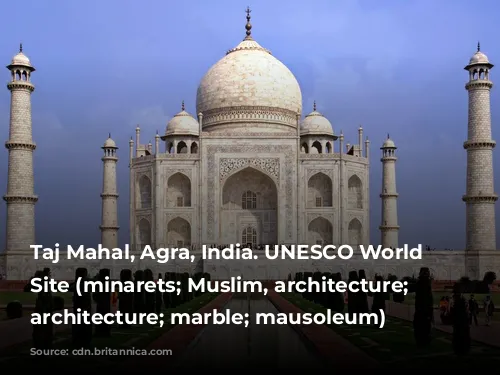
A Glimpse into Roman Life: Spectacles and Daily Life
The Colosseum was much more than just an arena for gladiatorial combat. It was a vibrant center of Roman life, a stage for a diverse range of spectacles. Imagine 50,000 people gathered in this massive structure, their eyes fixed on the arena below, anticipating the thrilling spectacle unfolding before them. The Colosseum’s design included a retractable awning called a velarium, operated by hundreds of Roman sailors, to shield spectators from the scorching sun. It was also a space for entertainment and cultural expression, hosting animal hunts, mock naval battles, and other forms of public spectacle. While the Colosseum’s role in the martyrdom of early Christians remains uncertain, it was undeniably a space where Romans gathered for entertainment, political events, and even religious ceremonies.
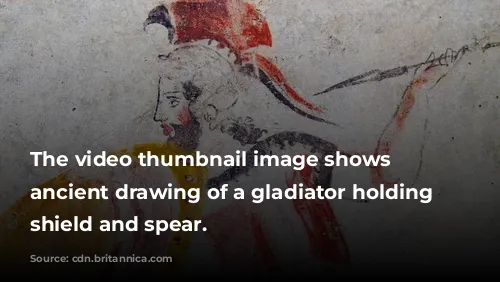
From Glory to Neglect: The Colosseum’s Journey Through Time
After centuries of grandeur, the Colosseum fell into decline. The medieval period saw it used as a church and then as a fortress by powerful Roman families. However, time took its toll, and the Colosseum suffered damage from lightning strikes, earthquakes, and, perhaps most significantly, vandalism and pollution. The once-majestic marble seats and decorative elements were stripped away, leaving it as a source of building materials. This period of neglect lasted for over a thousand years, a stark contrast to its former glory. The Colosseum was little more than a quarry, a sad testament to the passage of time.
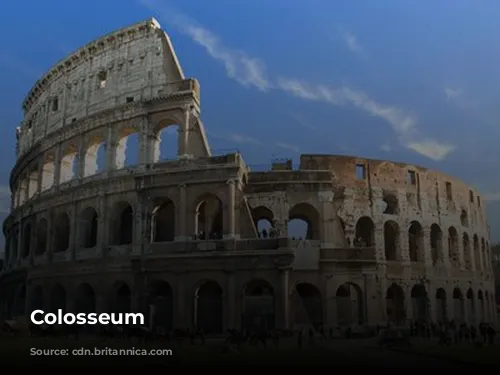
The Colosseum Reborn: Preservation and Restoration
Fortunately, the Colosseum’s story doesn’t end with neglect. Preservation efforts began in earnest in the 19th century, with notable contributions from Pope Pius VIII. The 1990s saw a significant restoration project, a symbol of renewed appreciation for this historical landmark. Today, the Colosseum stands as one of Rome’s most popular tourist attractions, attracting millions of visitors every year. It is a place where history comes alive, where visitors from all over the world gather to marvel at the grandeur of ancient Rome.
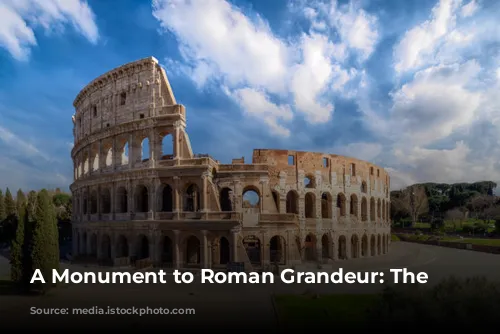
A Lasting Legacy: The Colosseum’s Enduring Appeal
The Colosseum is not merely a structure; it’s a symbol of Roman power, ingenuity, and cultural identity. It continues to captivate visitors with its imposing presence and its fascinating history. Its endurance through centuries of change, from a bustling arena to a quarry and back to a monument, speaks to its enduring appeal. The Colosseum serves as a reminder of the Roman Empire’s legacy and its lasting impact on the world. It’s a place where visitors can connect with the past, experience the awe of Roman engineering, and appreciate the enduring power of history.
